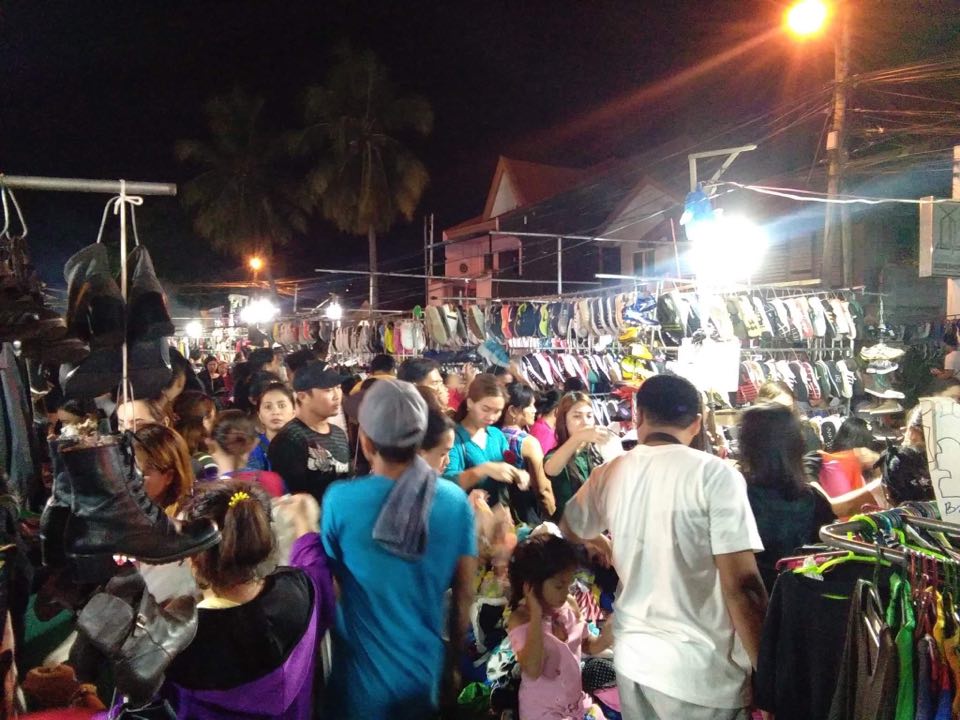Ukay-ukay fashion used to be unpopular but the tables have turned and people nowadays go to thrift stores to buy trendy, unique, and affordable apparel.
Ukay-ukay is known to be the Philippines’ version of the flea market. The term is derived from the verb halukay which literally means “digging” or “sifting through.” It is rummaging through a pile of run-down clothes, bags, shoes, and other pre-owned goods at a very cheap and bargain price
In a country that is often hit by calamities, shiploads of secondhand garments and other relief goods from various parts of the world are sent here, but these donations find their way to tradesmen who in turn, sell these clothes to the general public.
Under the Republic Act No. 4653 also known as an “Act to safeguard the health of the people and maintain the dignity of the nation by declaring it a national policy to prohibit the commercial importation of textile articles commonly known as used clothing and rags” makes a significant part of the ukay-ukay business illegal. Nonetheless, the existence of the law does not inhibit the abundance of these thrift stores across the Philippines. In fact, these stores are much exposed to the public rather than situated in secluded areas.

Initially, majority of the consumers are those who cannot afford branded clothes, that is why they see ukay-ukay stores as an opportunity to own decent clothes within their budget. However, the culture of ukay-ukay has evolved where even the fashion experts gouge into the piles of clothing looking for vintage pieces. Enthusiasts on the other hand, believe that it is more convenient to maintain self-expression through fashion, when buying clothes at thrift shops given its affordable price, and the rare possibility of seeing another person own the exact same piece.
Ukay-ukay has become a huge business in the Philippines including here in Davao City, rendering livelihood to a large number of families. The known bargain centers of the city can be found at Bankerohan, Ilustre, and the makeshift stalls at Roxas street.
Bankerohan Public Market is the busiest market in the city, where most fresh produce are first delivered and traded. At 4 a.m. ukay-ukay vendors would also start setting up their stalls and people from the wet market would also stop by to sift through the clothes. The famous newly opened ‘Ukay-ukay ni Xy,” is one of the most popular thrift shops in the market.
In the streets of Ilustre, the cheapest ukay-ukay clothes can be found. The clothes displayed beside the Gaisano Grand Illustre ranges from P5 to P30. However, clothes that are sorted and hanged are more costly compared to the clothes that are just piled up together in a table.
For night owls that are seeking budget-friendly bargains, Roxas night market is the perfect spot. Open from 5 in the afternoon to 12 midnight; enjoy the street food and unlimited ukay-ukay goodies displayed every night. Buyers should check the clothes for holes and stains because it might be a little hard to detect damages when browsing at night.

In thrift shopping, shoppers must withstand the humid and crowded areas where most of the ukay-ukay stores are situated. It is advised that one must not bring heavy things when thrifting in order to survive the relentless rummage from one stall to another. Thrift stores usually have a strong chlorine odor that may cause headache for some, since the clothes are thoroughly sanitized. For first-time goers that have sensitive smell, wearing a mask is a big help. Shoppers must have the patience and the stamina or one will never succeed in finding treasures hidden under the innumerable piled up clothes. Even in thrift shopping, consumers can be conscious in conserving our environment by bringing eco bags instead of asking for plastic cellophanes.
In the ukay-ukay culture, there is an undisclosed rule that people should know and it is the way tradesmen sort the clothes. Usually, the clothes that are well sorted are hanged and much more expensive compared to the ones that are piled in big tables. When comparing the mall and ukay-ukay price, a shirt that costs Php 99 bought from the mall is already cheap, but when a branded shirt that cost for the same amount is bought at the thrift shop, it is already considered too expensive.
Ukay-ukay lovers explain that affordable branded shirts should just range from twenty to fifty pesos, while affordable pants should just range from eighty to P120. Paying for clothes beyond these price ranges would really be up to the costumers. Bringing small bills or paying for the exact amount can help in haggling over the price of the clothes.
It is no doubt that ukay-ukay has become socially accepted. The ability to find authentic pieces and having an eye for unique textiles underneath those that are not in the best condition is definitely a gift that not everyone has. For some, thrift shopping is considered as treasure hunting, and others see it as a quest for affordable clothing which is part of our basic necessity.
Overall, it’s never really about the price or the brand of clothes you wear but it all matters on how you carry yourself. A person’s worth will never be measured through the clothes one wears, and a cheap ukay-ukay find can look as classy as a vintage piece, as long as you wear it with confidence.
Daphni H. Madelo and Cyra Ingrid A. Castillo/USeP Interns
